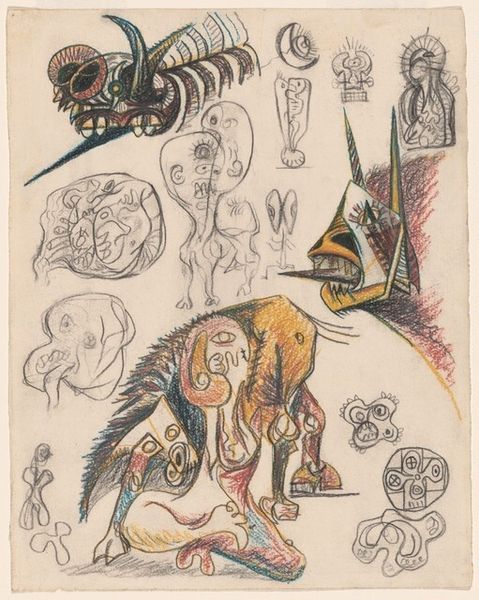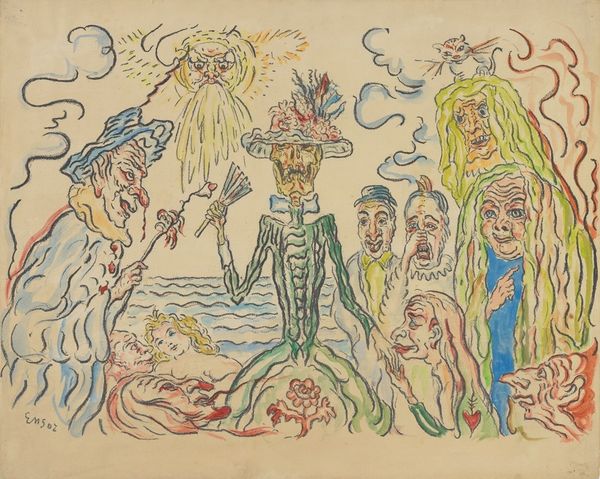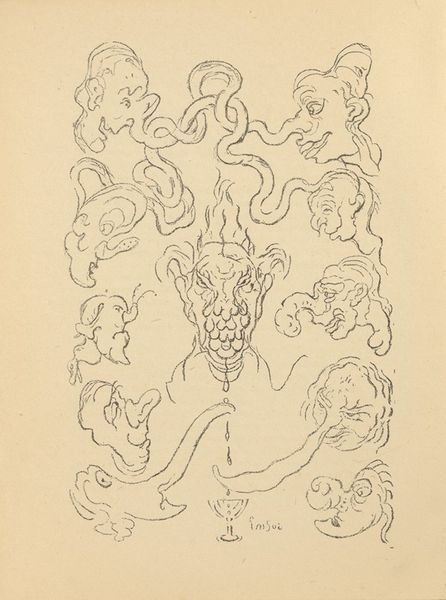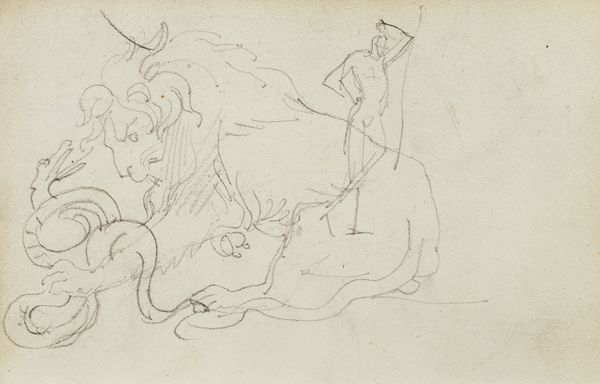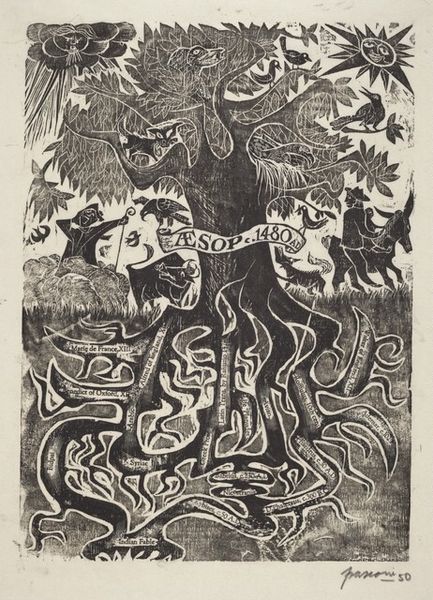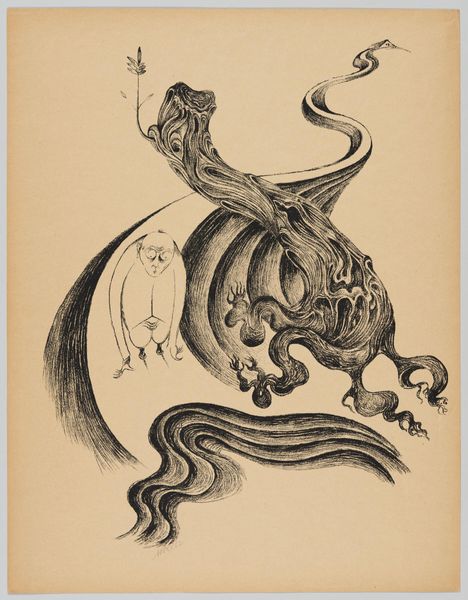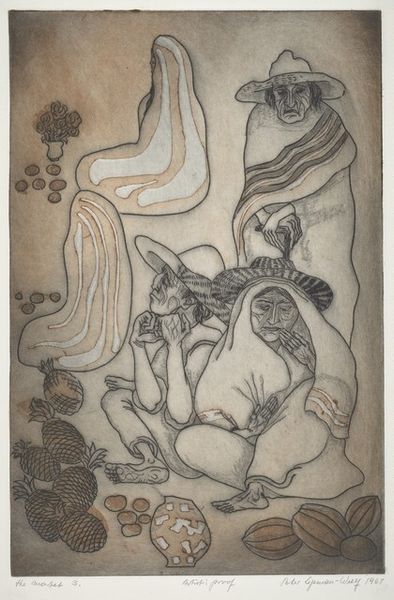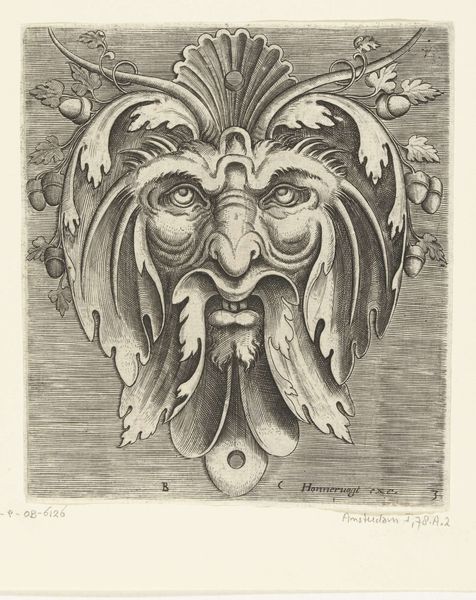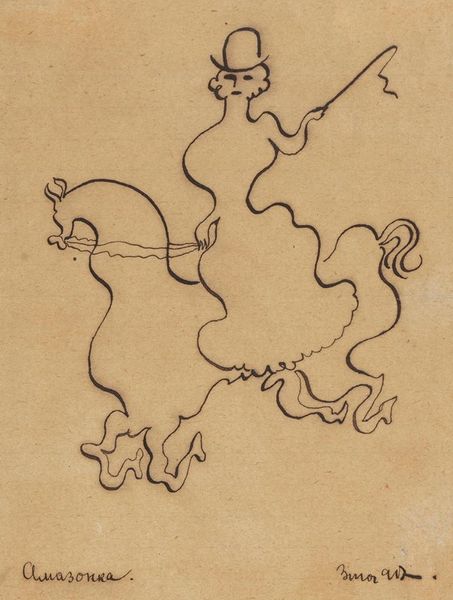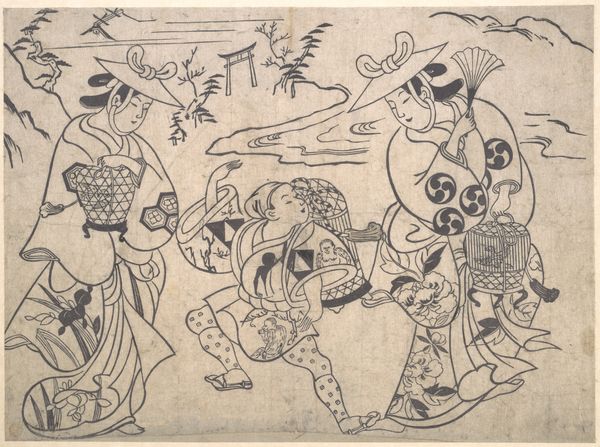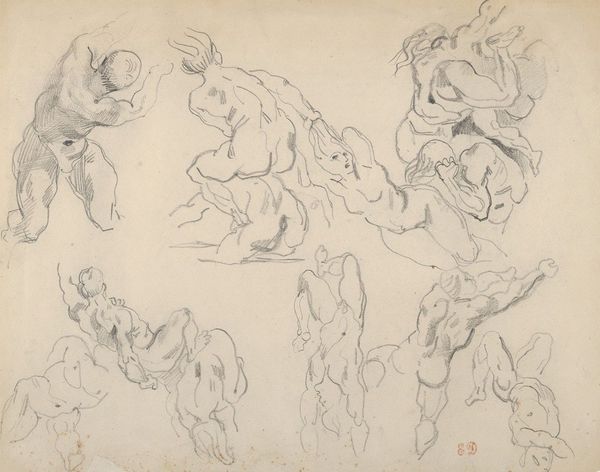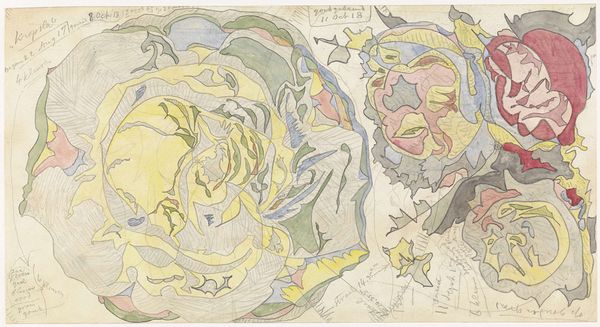
drawing, coloured-pencil
#
portrait
#
drawing
#
coloured-pencil
#
caricature
#
fantasy-art
#
figuration
#
expressionism
Copyright: Public Domain: Artvee
Editor: We’re looking at James Ensor’s “Rendez notre ancienne face fors les chers faux nez burlesques” from 1923, created with colored pencil. It's…well, it's rather grotesque. All these distorted faces surrounding a central figure. How do you interpret this work? Curator: Ensor's grotesqueries, these faces… they aren't simply about shock value. They emerge from a profound socio-political critique. How do you see these figures relating to the societal landscape of post-war Europe, particularly considering the rise of the bourgeoisie? Editor: I hadn't really considered that. I was just seeing weird faces. The "false noses," though... does that point to some kind of performance or masking of identity? Curator: Precisely! Ensor was deeply critical of the masks people wear, the ways societal norms and expectations distort authentic selves. Think about the societal pressures he experienced in Belgium – the political unrest, the clash between tradition and modernity. Do you see a sense of rebellion against those pressures here? Editor: Yes, I think so. It feels like a rejection of polite society, of forced conformity. The colors are almost childish, like a deliberate thumbing of the nose at good taste. Curator: Consider also the role of caricature throughout art history as a tool for social commentary. How does Ensor employ that tradition here, amplifying it to expose hypocrisy and question power? Editor: I guess it’s more than just being weird; it’s being purposefully provocative and deeply engaged with what was going on around him. It is much easier to think of the piece as satire or a caricature of society. Curator: Exactly. He compels us to question what is hidden behind appearances. Seeing art as activism opens new dialogues. Editor: This makes me want to revisit more Expressionist works thinking about the cultural climate.
Comments
No comments
Be the first to comment and join the conversation on the ultimate creative platform.
